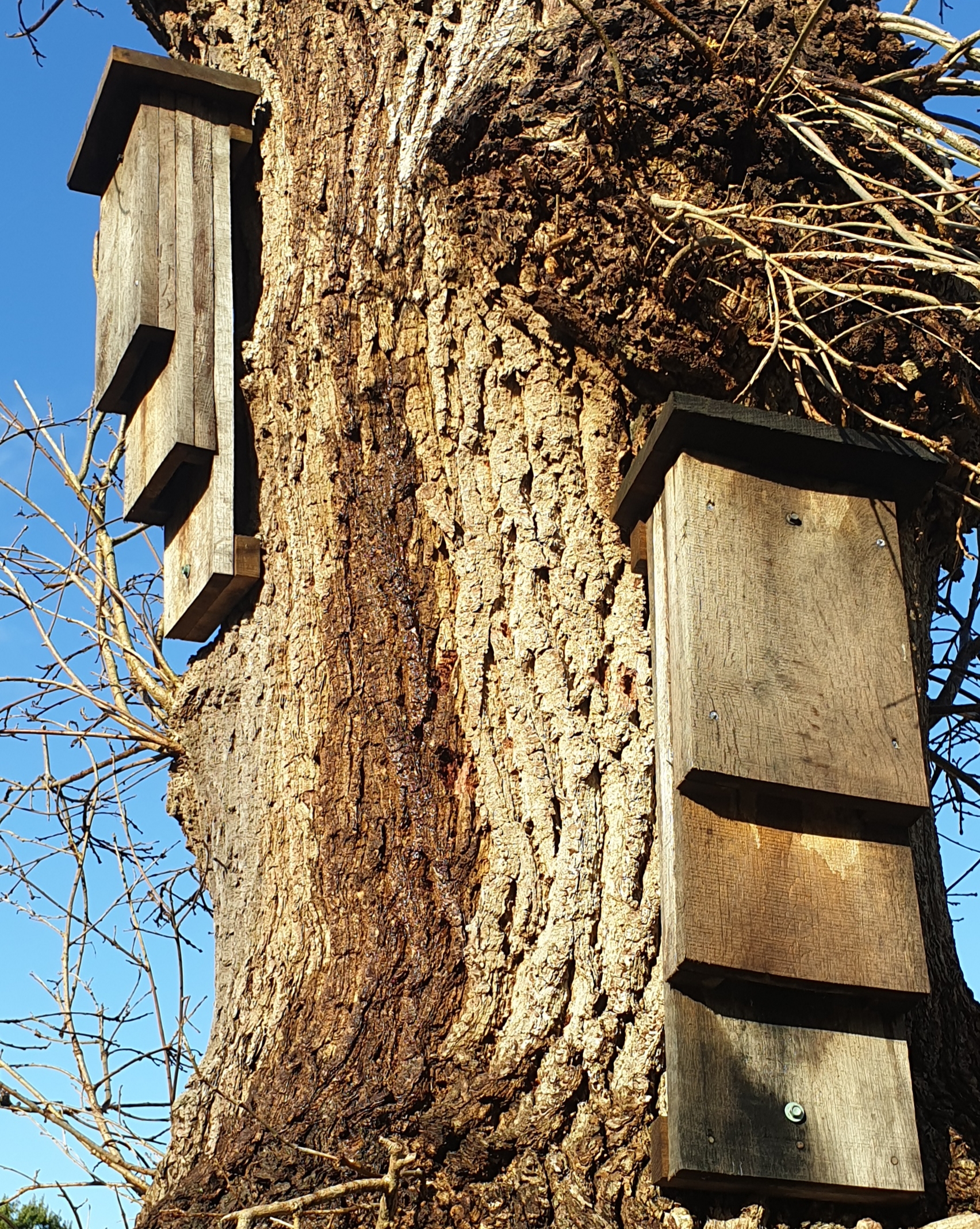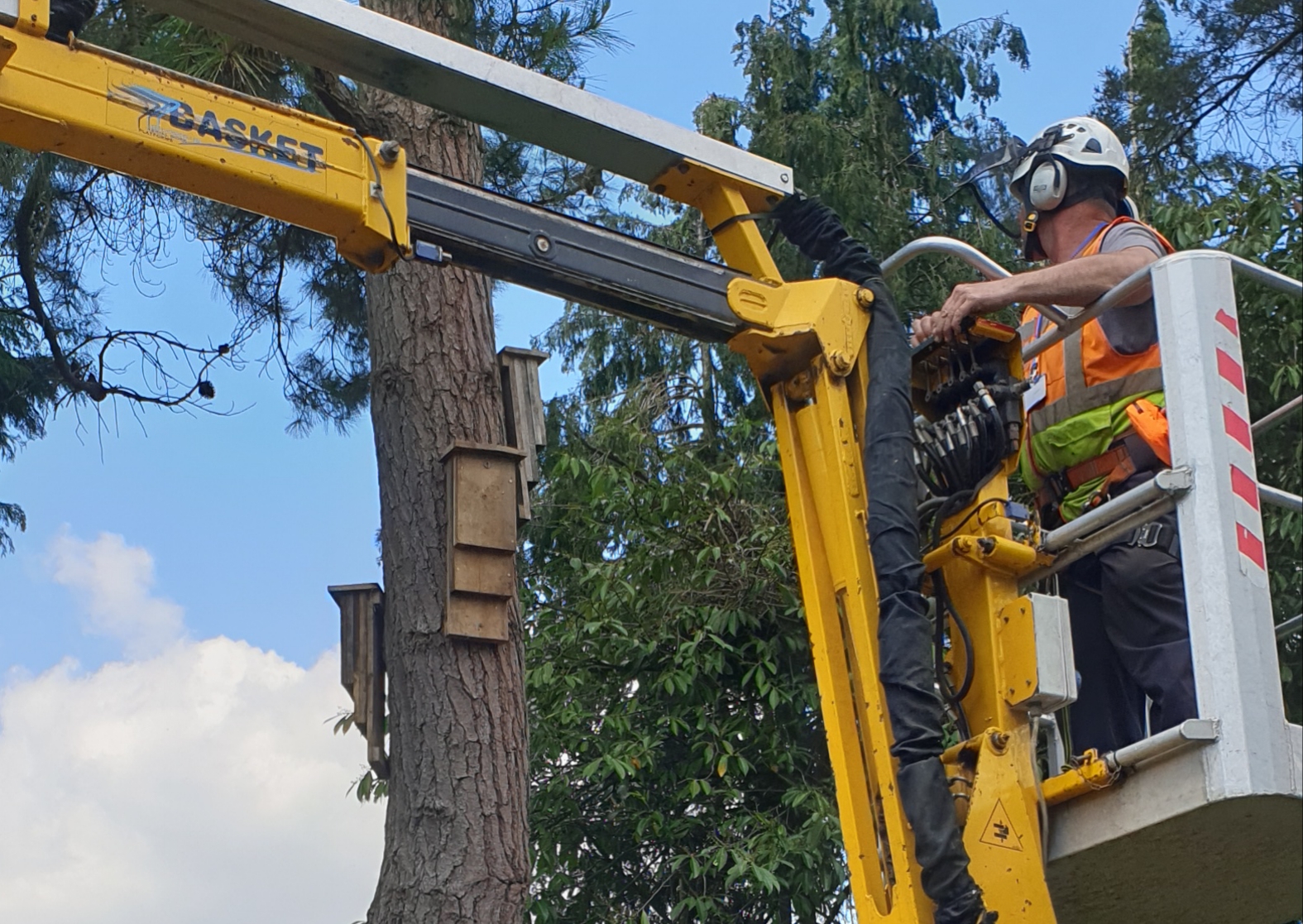I’m going to talk you through the building of one of the most easy to construct bat boxes. And it’s arguably up there with the best of them, being self-cleaning and offering lots of nooks and crannies for bats to hide away during the day.
There’s a few different bat boxes on the market of various designs and constructed from all sorts of materials. I’ll be showing you how to make the Kent Bat Box, named after the Kent Bat Group who designed it. www.kentbatgroup.org.uk

It’s really simple to make from a plank of oak 200mm wide and 20mm thick, some 15mm battens and some 20mm battens. Battens are just smaller bits of wood, 15mm or 20mm thick by about 30mm wide. All my oak is fresh sawn, (not planed or sanded), and not treated with any preservatives. The fresh sawn finish will be grippy enough for bats to hang onto and oak is durable, so it doesn’t need chemical preservative which may be harmful to bats.
The exact lengths of wood are not desperately important, although you wouldn’t want to go too short. However, the size of the crevices your battens create is important. As I said, you’ll need some 15mm and some 20mm battens.
The back of my box is 550mm long. I’ve attached two 20mm battens across the top and bottom to hold it away from the tree or wall I fix it to. This will allow bats to get behind the box as well as in it. They move around a surprising amount depending on the temperature and humidity. They’re pretty fussy creatures.

The back of your bat box
My next plank is cut to 400mm and I’ve attached another couple of 20mm battens along the sides of it.

Flip your back plank over and fix this to the front of your backing plank. I’ve used screws to fix mine, but nails would work just as well.
Then repeat the stage above but with a plank 250mm long and battens of 15mm. This will offer your bats a slightly narrower crevice to get into. Fit this to the front. Try to line up your planks and batons at the top so there aren’t too many gaps when it comes to fitting the roof. Alternatively you could cut 3mm off the top once they’re all screwed together to give you a nice clean end to attach the roof.

My roof is 300mm x 170mm when lined up with the back my box it gives me a good overhang all the way round to prevent water getting in.

The more boxes you can put up, the better. Bats are fickle and picky when it comes to temperature and humidity. So if you’re installing them outside, put boxes at various heights, (no lower than two metres) and facing in different directions. Bats will move about during the day from box to box if one is better than another as the sun passes over. The same goes for the insides of buildings/loft spaces – place your boxes at different heights and against as many different walls as you have.

Installing bat boxes
Build as many boxes as you can and spread them liberally around your garden. Hopefully you’ll attract crevice-dwelling species such as; Pipistrelle, Brandt’s and Whiskered bats. Alternatively, give me a shout and I’ll be happy to help.
Having thought about their home, perhaps you can improve your space for their food, namely flying insects. There’s lots you can do to improve the habitat for bats. Flowers, trees, hedges, meadow etc are all great. I’m always happy to help if you’d like a hand.
Andy
5 comments on How to Build a Bat Box
Dear Andrew, just recently I bought a bat box from the Nature Protection Society of Germany (in short NABU), but now that I’ve read your instructions to build a box (or more) I’ll give it a go myself! 🙂 I love bats, and you describing them as picky, fussy and fickle made me smile so much. 🙂 Thank you for your great ideas.
Lots of love from Germany, Doris 🙂
I have made some bat boxes using untreated wood but am concerned that they won’t last long outside without some form of treatment. I have read one mustn’t use varnish or paint. Can one use a waterproof wood stain?
You can, but it may deter the bats for a while until the smell goes from it. Bats roost in houses with treated timbers so I guess it can’t do them too much harm.
Will different species of oak wood work? I have access to red oak, spanish cedar, and bald cypress. Thank you.
We would like to build a bay box and wonder whether 150mm wide planks would be too narrow for the job. We see that 200mm is usually used.